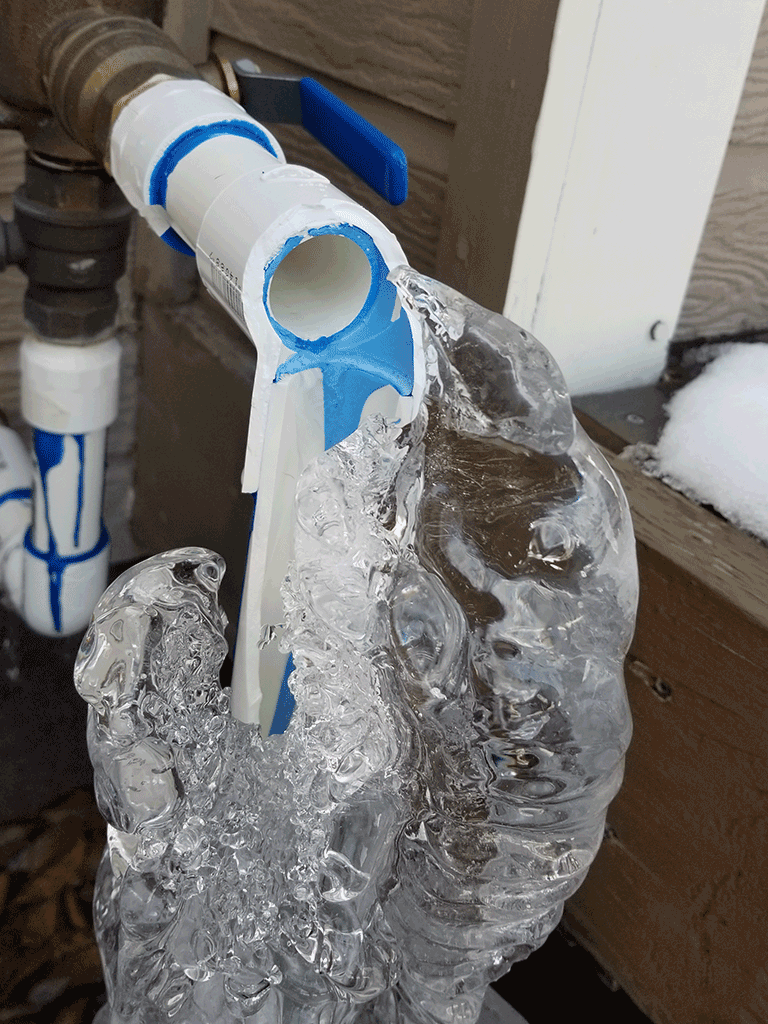Are you currently trying to locate info around 6 Ways to Prevent Frozen Pipes?

Cold weather can damage your pipes, especially by freezing pipelines. Right here's just how to prevent it from occurring and what to do if it does.
Introduction
As temperatures decrease, the risk of icy pipes boosts, possibly resulting in expensive fixings and water damage. Comprehending just how to prevent frozen pipes is vital for homeowners in cold climates.
Comprehending Frozen Pipes
What triggers pipes to freeze?
Pipes freeze when exposed to temperatures below 32 ° F (0 ° C) for extended periods. As water inside the pipes ices up, it increases, taxing the pipeline walls and potentially causing them to burst.
Threats and problems
Frozen pipes can bring about water supply disturbances, property damages, and costly repairs. Ruptured pipes can flooding homes and trigger extensive architectural damage.
Indicators of Frozen Water Lines
Identifying icy pipes early can stop them from rupturing.
Just how to recognize frozen pipelines
Look for reduced water flow from taps, unusual odors or noises from pipelines, and visible frost on subjected pipelines.
Avoidance Tips
Insulating prone pipes
Wrap pipelines in insulation sleeves or make use of heat tape to safeguard them from freezing temperatures. Concentrate on pipelines in unheated or exterior areas of the home.
Home heating strategies
Keep indoor areas adequately heated, particularly areas with plumbing. Open up cabinet doors to permit warm air to distribute around pipelines under sinks.
Safeguarding Outside Pipes
Garden pipes and exterior faucets
Disconnect and drain pipes yard hoses before wintertime. Mount frost-proof faucets or cover outdoor faucets with insulated caps.
What to Do If Your Pipes Freeze
Immediate actions to take
If you presume icy pipelines, keep taps available to alleviate stress as the ice melts. Use a hairdryer or towels soaked in warm water to thaw pipelines gradually.
Long-Term Solutions
Structural adjustments
Think about rerouting pipes away from exterior wall surfaces or unheated locations. Include additional insulation to attic rooms, basements, and crawl spaces.
Upgrading insulation
Purchase top notch insulation for pipelines, attics, and walls. Proper insulation helps keep regular temperature levels and minimizes the danger of frozen pipes.
Verdict
Protecting against icy pipes requires aggressive procedures and quick responses. By recognizing the reasons, signs, and safety nets, house owners can safeguard their pipes during cold weather.
5 Ways to Prevent Frozen Pipes
Drain Outdoor Faucets and Disconnect Hoses
First, close the shut-off valve that controls the flow of water in the pipe to your outdoor faucet. Then, head outside to disconnect and drain your hose and open the outdoor faucet to allow the water to completely drain out of the line. Turn off the faucet when done. Finally, head back to the shut-off valve and drain the remaining water inside the pipe into a bucket or container. Additionally, if you have a home irrigation system, you should consider hiring an expert to clear the system of water each year.
Insulate Pipes
One of the best and most cost-effective methods for preventing frozen water pipes is to wrap your pipes with insulation. This is especially important for areas in your home that aren’t exposed to heat, such as an attic. We suggest using foam sleeves, which can typically be found at your local hardware store.
Keep Heat Running at 65
Your pipes are located inside your walls, and the temperature there is much colder than the rest of the house. To prevent your pipes from freezing, The Insurance Information Institute suggests that you keep your home heated to at least 65 degrees, even when traveling. You may want to invest in smart devices that can keep an eye on the temperature in your home while you’re away.
Leave Water Dripping
Moving water — even a small trickle — can prevent ice from forming inside your pipes. When freezing temps are imminent, start a drip of water from all faucets that serve exposed pipes. Leaving a few faucets running will also help relieve pressure inside the pipes and help prevent a rupture if the water inside freezes.
Open Cupboard Doors
Warm your kitchen and bathroom pipes by opening cupboards and vanities. You should also leave your interior doors ajar to help warm air circulate evenly throughout your home.
:strip_icc()/snow-outdoor-faucet-pipes-4af65d1e5e904fb1aa7bf74071fe5d89.jpg)
I am very intrigued by Prevent Frozen Pipes and I am assuming you appreciated our blog post. Do you know someone else who is serious about the niche? Take a moment to promote it. We treasure reading our article about 6 Ways to Prevent Frozen Pipes.
Estimate Free